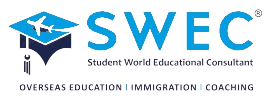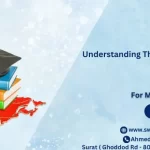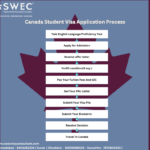Immigration, Refugees, and Citizenship Canada (IRCC) has recently issued 964 invitations to apply (ITAs) for permanent residence in the latest Express Entry draw. This draw was exclusively for candidates in the Provincial Nominee Program (PNP), requiring a minimum Comprehensive Ranking System (CRS) score of 686.
Busy Month for Express Entry Draws
July month is very important for express entry draws. This month’s draws have alternated between the Canadian Experience Class (CEC) and PNP, along with category-based selections focusing on French language proficiency and healthcare occupations.
Category-Based Selections
In two category-based draws focusing on French language proficiency, IRCC issued 5,000 ITAs. Additionally, 3,750 ITAs were given to healthcare candidates on July 5, and 1,800 ITAs were issued to candidates in trade occupations on July 4.
Program-Specific Draws
Program-specific draws have also seen a high number of ITAs. By July 18, IRCC had invited 6,300 CEC candidates and 2,311 PNP candidates. These candidates often already live and work in Canada as temporary residents. The return to program-specific draws on May 30 marks a significant shift after a year of general draws, aligning with IRCTC’s goal to focus more on domestic candidates.
Reducing and Stabilising Temporary Residents
In March, IRCC introduced a new goal to reduce and stabilise the number of temporary residents in Canada while meeting permanent resident targets. This initiative is part of the broader Immigration Levels Plan, aiming to streamline the pathway to permanent residency.
Express Entry Draw Results in 2024
| Date | Draw Type | Number of ITAs | Minimum CRS |
| July 30 | Provincial Nominee Program | 964 | 686 |
| July 18 | French language proficiency | 1,800 | 400 |
| July 17 | Canada Experience Class | 6,300 | 515 |
| July 16 | Provincial Nominee Program | 1,391 | 670 |
| July 8 | French proficiency | 3,200 | 420 |
| July 5 | Healthcare occupations | 3,750 | 445 |
| July 4 | Trade occupations | 1,800 | 436 |
| July 2 | Provincial Nominee Program | 920 | 739 |
| June 19 | Provincial Nominee Program | 1,499 | 663 |
| May 31 | Canadian Experience Class | 3,000 | 522 |
| May 30 | Provincial Nominee Program | 2,985 | 676 |
| April 24 | French proficiency | 1,400 | 410 |
| April 23 | General | 2,095 | 529 |
| April 11 | STEM occupations | 4,500 | 491 |
| April 10 | General | 1,280 | 549 |
| March 26 | French language proficiency | 1,500 | 388 |
| March 25 | General | 1,980 | 524 |
| March 13 | Transport occupations | 975 | 430 |
| March 12 | General | 2,850 | 525 |
| February 29 | French language proficiency | 2,500 | 336 |
| February 28 | General | 1,470 | 534 |
| February 16 | Agriculture and agri-food | 150 | 437 |
| February 14 | Healthcare occupations | 3,500 | 422 |
| February 13 | General | 1,490 | 535 |
| February 1 | French language proficiency | 7,000 | 365 |
| January 31 | General | 730 | 541 |
| January 23 | General | 1,040 | 543 |
| January 10 | General | 1,510 | 546 |
Understanding Express Entry
Express Entry is a system used by IRCC to manage applications for three of Canada’s main economic immigration programs: the Federal Skilled Worker Program, the Canadian Experience Class, and the Federal Skilled Trades Program. Candidates are ranked based on their CRS score, which takes into account factors like age, education, work experience, and language proficiency.
Benefits of Express Entry
- Fast Processing Times: The goal is to process applications within six months.
- High-Skilled Candidates: The system targets candidates who can contribute to Canada’s economy and labour market.
- Transparent Selection: The CRS scoring system provides a clear and transparent method for ranking candidates.
Category-Based Selection Introduced in 2023
In May 2023, IRCC introduced category-based selection draws to target candidates with specific skills or attributes. The categories include healthcare occupations, STEM professions, trades occupations, transport occupations, agriculture and agri-food occupations, and French-language proficiency.
These categories were selected after extensive consultations and will remain in place throughout 2024, though they may be revised next year.
Conclusion
The recent Express Entry draws demonstrate IRCC’s commitment to attracting skilled immigrants to Canada. By focusing on specific categories and program-specific draws, Canada is effectively meeting its immigration targets while addressing labour market needs. If you are considering immigration to Canada, now is a great time to explore your options and start your application process.
FAQs
1. What is the Comprehensive Ranking System (CRS)? The CRS is a points-based system used to assess and score a candidate’s profile to rank them in the Express Entry pool. Points are awarded based on factors such as age, education, work experience, and language proficiency.
2. How often does IRCC conduct Express Entry draws? IRCC conducts Express Entry draws every two weeks. However, the frequency and timing can vary.
3. What is a Provincial Nominee Program (PNP)? A Provincial Nominee Program (PNP) enables Canadian provinces and territories to nominate individuals who want to immigrate to Canada and choose to settle in a specific province. Each PNP has its own criteria and selection process.
4. What are the benefits of category-based selection draws? Category-based selection draws allow IRCC to target candidates with specific skills and attributes that are in demand in Canada, helping to address labour market needs and economic priorities.
5. How much does it take to process an Express Entry application? IRCC aims to process Express Entry applications within six months from the date of submission.
6. Can I improve my CRS score? Yes, candidates can improve their CRS score by gaining additional work experience, improving language test scores, obtaining higher education qualifications, or receiving a job offer or nomination from a Canadian province.
To Know More You Can Contact US





